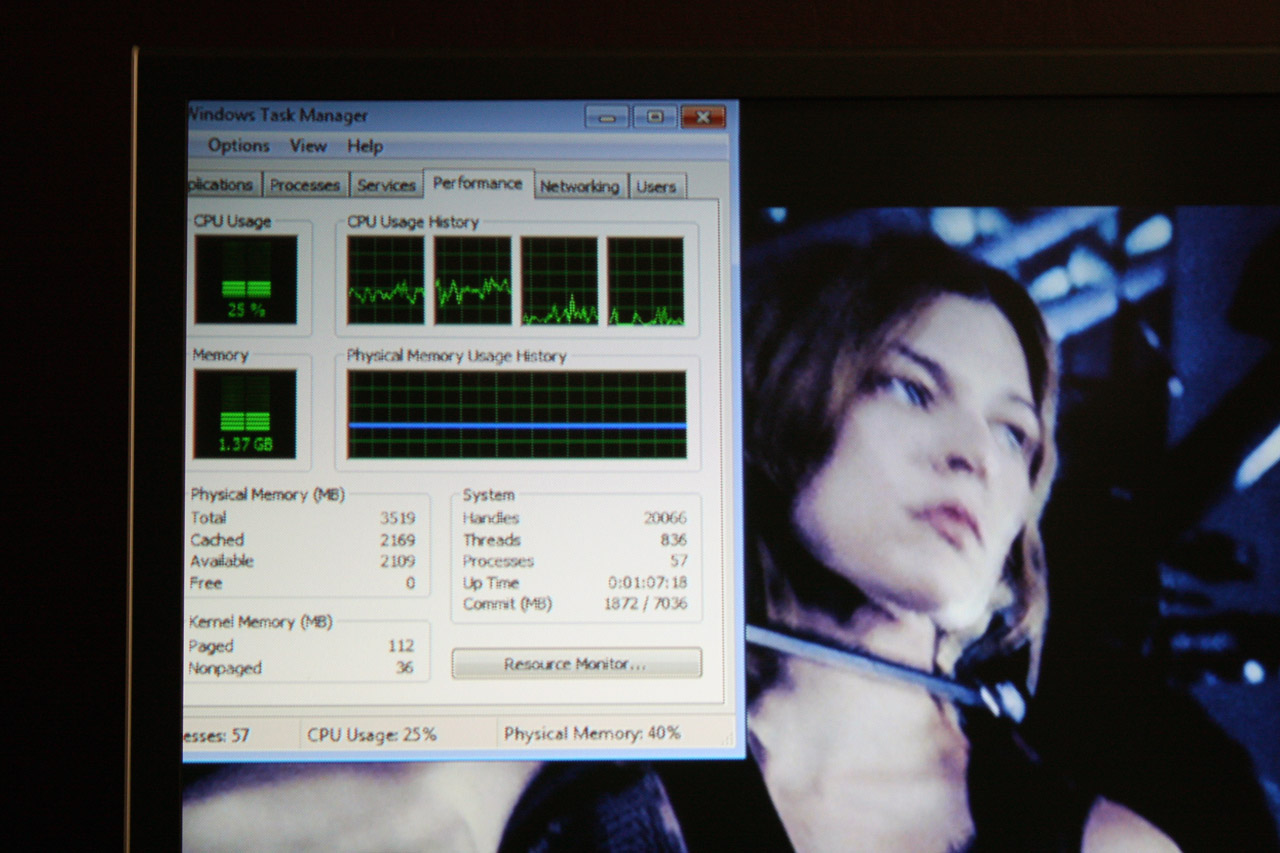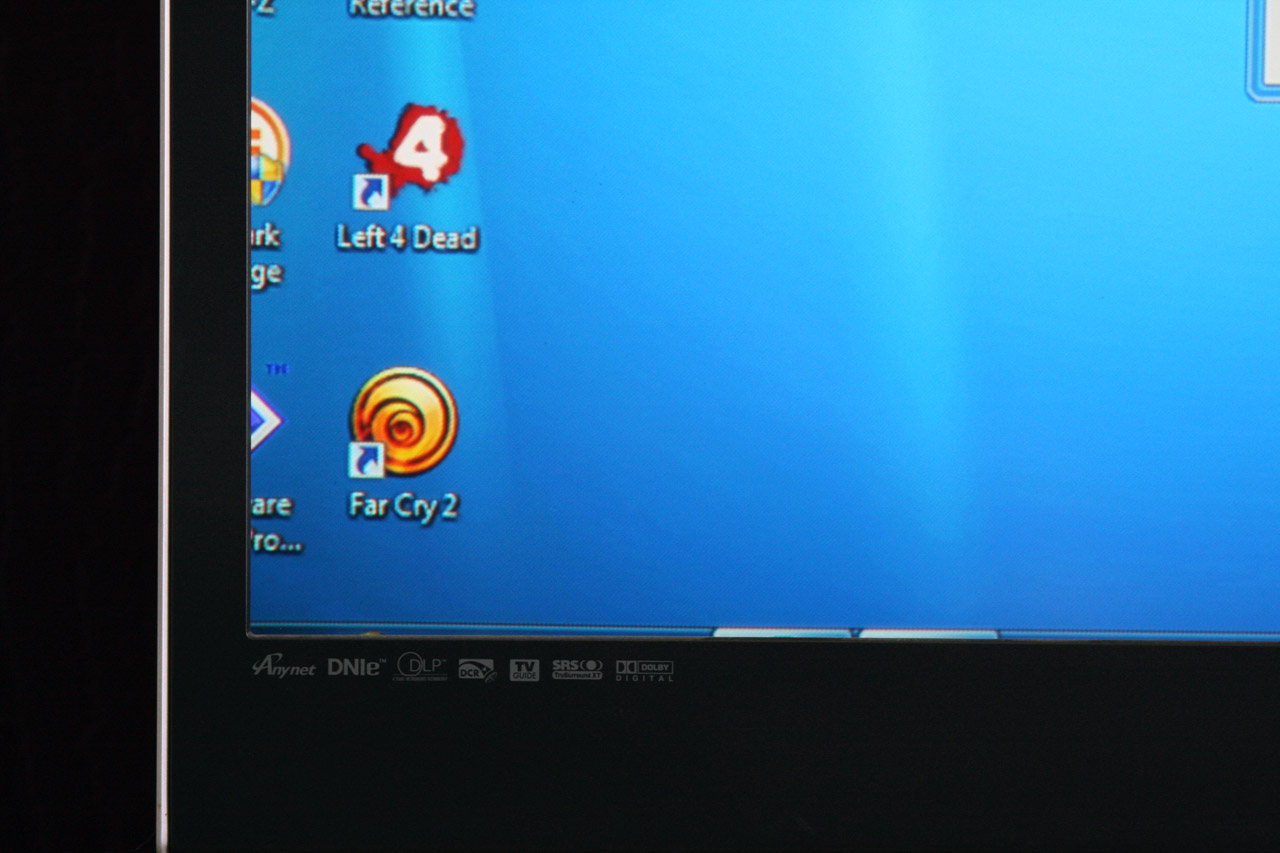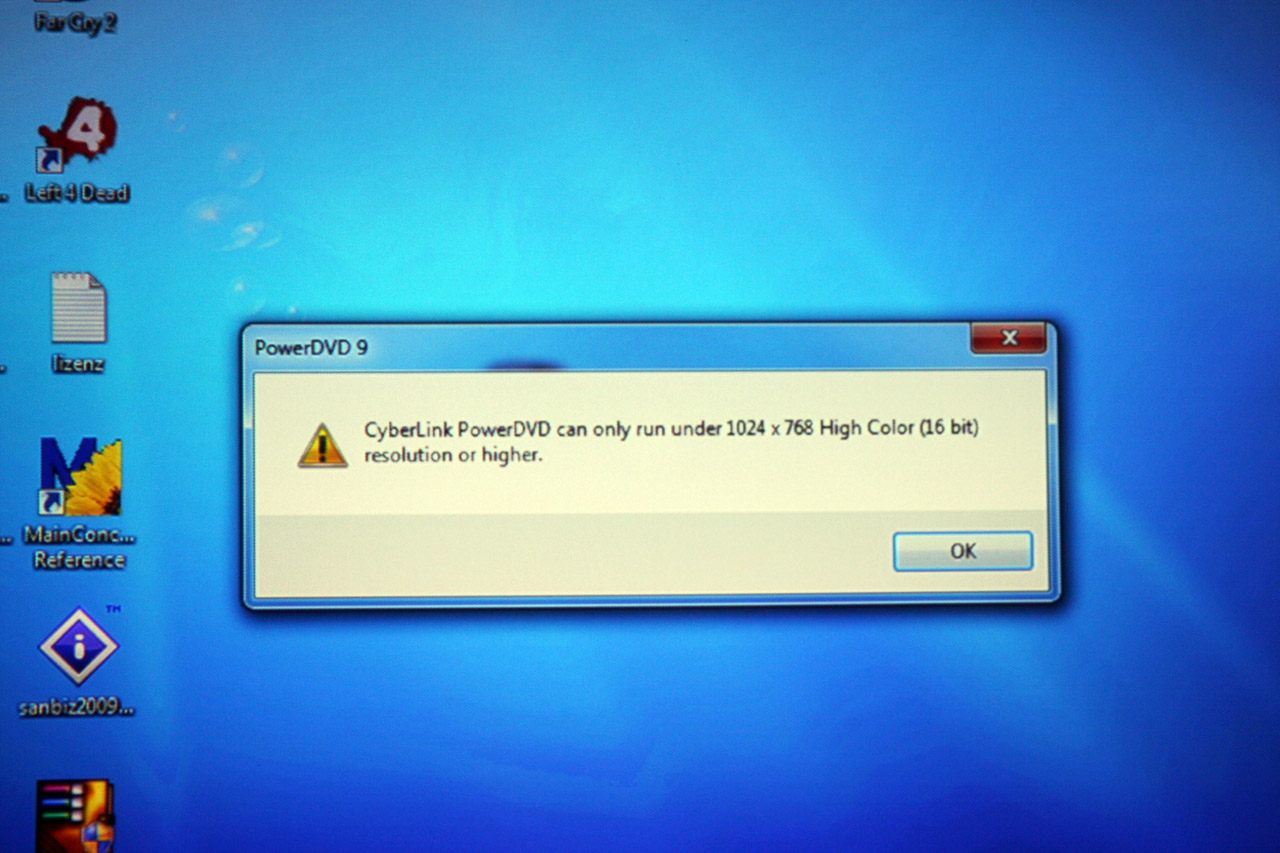Zotac's Ion Board On Windows 7: Nvidia Re-Arms Intel’s Atom
Ion As An HTPC
This is perhaps the most viable application of Nvidia’s Ion platform. As such, I saw it fit to test under Windows Vista and the release candidate of Windows 7.
We’ll start with Windows 7, since that’s the unchartered territory many software vendors are still trying to conquer. Bear in mind that the operating system is still in pre-production and that hardware/software vendors still have a lot of work to do before their products are officially ready to support this upcoming OS.
I tested with two different DVD decoding apps: CyberLink’s PowerDVD 9 Ultra and ArcSoft’s TotalMedia Theater 3 Platinum. Video quality looked fine on both (and the pair recognized and properly enabled Nvidia’s PureVideo HD technology). Audio was a different story, though.
At first, PowerDVD wanted to pass PCM audio decoded by the software to the lab's brand new Onkyo TX-SR507; it wouldn’t send the undecoded Dolby Digital/DTS signal. Unfortunately, even while 5.1-channel HDMI was enabled in Windows, the software was only outputting two channels of sound. TotalMedia Theater 3 did the same thing, but it had a significant advantage in that it worked much more smoothly with the Windows 7 Media Center interface.
Thinking that there might be an issue with Ion and multi-channel output, we loaded a drive with Vista and tried both decoding apps one more time. Under TotalMedia Theater 3, we were successfully able to get DTS and Dolby Digital pass-through, but the same configuration just wouldn’t work under PowerDVD 9. The video playback was sporadic—almost as if PureVideo HD wasn’t being properly utilized—and there was no sound output at all.
Nvidia followed up with an updated HDMI driver update for Windows 7. The update let us successfully pass DD/DTS through to both decoding apps, but as of this writing, PowerDVD 9 still won't handle the decode and send multi-channel linear PCM to the receiver (even though we confirmed support by running the test in Windows' audio control panel).
Ion’s Home Theater Strengths
Get Tom's Hardware's best news and in-depth reviews, straight to your inbox.
Despite the software troubles we had under Windows 7 and Vista, we still see a lot of potential in this tiny platform—almost all of which is derived from its Nvidia IGP core logic. The combination of PureVideo HD 3 and 7.1-channel LPCM output through HDMI enable an almost-perfect A/V solution, providing the audio support can be straightened out through updated drivers.
We didn’t measure CPU utilization with any VC-1-based movies (the main improvements from VP2 to VP3 was in VC-1 bitstream decoding), but we did test with several H.264 titles and saw utilization in the range of 25-35% (Live Free or Die Hard, 28 Mb/s, for instance, was fairly steady at 25%). That’s a true testament to the work Nvidia’s chipset is offloading from the host processor.
As a result, in our best-case configuration of Windows Vista and ArcSoft’s TotalMedia Theater 3, we were able to enjoy smooth high-def video playback and DTS audio from this silent, tiny platform.
Ion’s Home Theater Weaknesses
Clearly there is still software work to be done. With that said, it’s hard to fault IHVs and ISVs for coming up short in a release candidate operating system. Instead, we’ll focus on our experiences in Vista.
Once you’re watching your movie, Ion’s performance is great, and that’s because Nvidia is doing the heavy lifting. But getting to that point still feels like slogging through molasses. Launching Media Center, loading the decoding engine, reading optical media—actually using the system becomes frustrating for enthusiasts accustomed to more desktop-oriented processors.
Here’s another wrinkle: because neither PowerDVD nor TrueMedia Theater are certified by the AACS LA for use with Ion, you can’t bitstream TrueHD or DTS-HD over HDMI to your AVR. The workaround, of course, is having your decoder software do the job and output multi-channel LPCM. But as I’ve already mentioned, we weren’t able to get PowerDVD to output more than two channels of PCM audio in Windows 7 (or anything at all under Vista). Hopefully this will get worked out soon.
Finally, we had some resolution issues with the Zotac board in a home theater environment. Regardless of whether it was connected to our lab’s DLP directly or through an HDMI 1.3a repeater (using Onkyo’s TX-SR507), it’d default to 1176x664. Manually setting it to 1280x720 resulted in the picture overshooting both axes.
-
SpadeM ReplyGranted, we could have done significantly better in the power department had we been a little choosier with our CPU. The Athlon X2 7850 was attractive due to its $69 price tag, 2.8 GHz clock speed, and unlocked multiplier, but its Kuma core is still rated at 95 W. You can dip down to the $60 Athlon X2 5050e (running at 2.8 GHz as well) and cut your maximum TDP down to 45W for $10 less.
If you knew you could have done better with a 45W not a 95W processor .. what gives? The supplier didn't have it in stock or why go for the obvious power monster?
On a different note, I'm looking forward to the transcoding article. -
one-shot Everyone down-rates the first post which is posted by the author of the article. I'm not sure if anyone has noticed that yet because I see every author's first post down-rated many times.Reply -
sublifer ReplyHere’s the short of it. When it comes to running multiple apps at the same time, compressing/decompressing large archives, and yes, even trasncoding
Just wanted to help: transcoding -
hellwig I almost wish you hadn't even tried playing games on it, but I suppose you needed some sort of comparison for the performance of the ION chipset.Reply
How many people will use this as a satellite PC in their homes, and what ever happened to Windows Home Server? I would think you let your central PC/server handle the computing and just use this guy as a remote terminal to stream media to. -
I'm looking for a low power system like this... my old father leaves his p4 system on ALL the time, and wonder why his electric bill is so high :-\Reply
-
siliconchampion I love that they mentioned the GeForce 9300-ITX WiFi board at the end of the review. I used that board with an e7400, 4GB corsair, a low profile 9800 GT, a 320GB 7200RPM 2.5 inch drive, and an Antec 380 watt PSU. The reason I love it so much is three-fold.Reply
First, I put all of the above mentioned components and put them into the case from the original Xbox (while maintaning totally stock appearances except for the back.
Second, the board boots lightning fast, and is a pleasure to work with.
Third, before we put the 9800GT into the build, using the same 9300 chipset as the Ion platform, we were running HL2 on max settings at 1680x1050 resolution (except with only 2x AA) and getting 35-45 FPS. We also played Halo 2 on medium settings and that played very well also. Obviously, after the 9800 was added, the computer flies. That just goes to show you that the Atom really is what is holding back the capabilities of the 9300 chipset.
All of this was accomplished with about $500, so it is a good budget computer that is inside of an Xbox. My i7 system has nothing on the "coolness" factor of this computer.
-
cangelini teeth_03I thought the ION platform used the Geforce 9400 and not the 9300?Reply
The difference between 9300 and 9400 is clock speed. This one is slower than the 9300, even.



